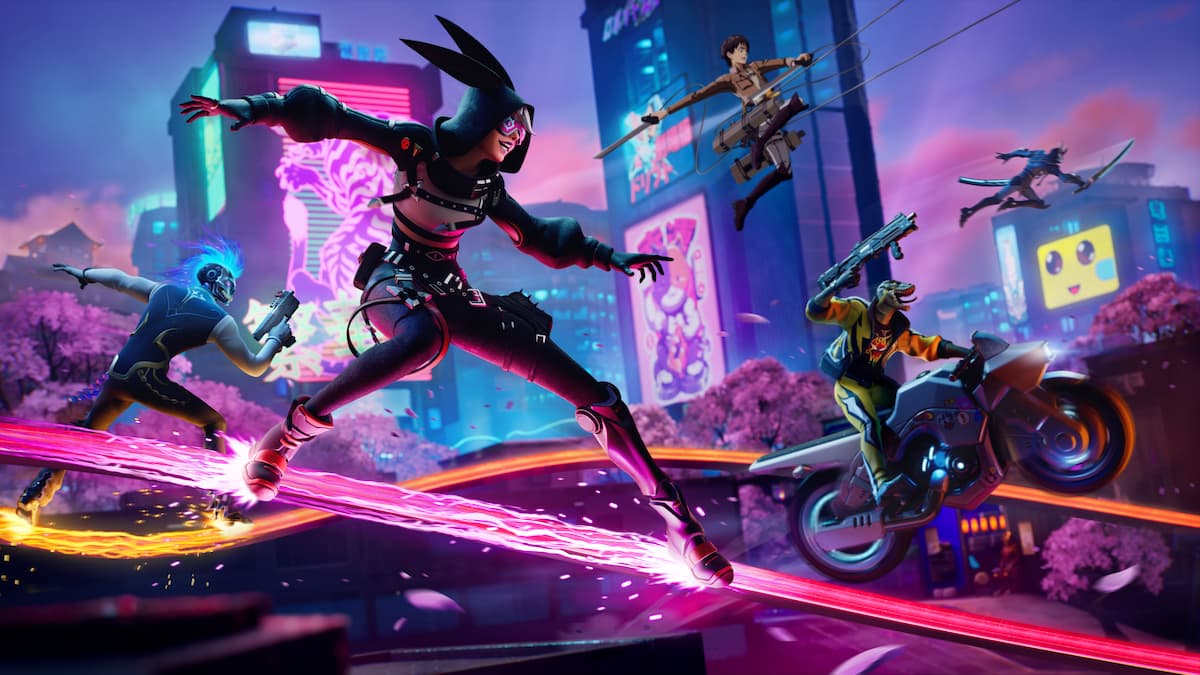Quality of Life and Performance Improvements

Despite still being in Early Access, Fortnite Battle Royale feels superbly polished already, and that’s thanks to some tireless effort from Epic Games. With the number of changes we’ve enjoyed since the game’s launch, it’s as if the developer has been working around the clock to iterate and improve its gameplay. It seems every week brings something new that alters the dynamic for the best, and recently that’s mostly been oodles of cool new weapons and items.
Yet it’s actually the improvements to the game’s optimization and various quality of life changes that we’re most happy with. Arguably the biggest point of difference from its rival battle royale title, PUBG, isn’t actually the cartoon aesthetic and fort building, but rather the smaller tweaks to its UI, various quality of life improvements, and the upgrades to its overall graphical performance.
Small alterations, such as being able to automatically pick up ammunition, the trajectory of thrown weapons being given a visual cue, and more fun things like the shot distance reader, have combined to make a big difference. Additionally, the rebalancing of weapon performance and drop rates have also helped hone the ebb and flow of matches. And Fortnite Battle Royale feels like a finished product now thanks to its slick menus, customization options, and a comprehensive list of player stats.
It’s also worth mentioning that Epic has never shied away from completely backtracking on changes made if the game has suffered as a result. Most recently, of course, the guided missile launcher, which the developer felt gave an unfair advantage to attackers who could hide during its use. The reactiveness of the development cycle and the culmination of these less obvious but critical adjustments have been a key takeaway of Fortnite’s ongoing journey to a full launch.
The Battle Pass
For once, we’re actually celebrating the introduction of in-game purchases. We always knew they were coming, of course, but in typical Epic fashion, the developer didn’t stop at merely lazily throwing in expensive skin packs. Instead, a progression system in the form of its Battle Pass program was implemented, and it has opened up a whole new layer to Fortnite.
While one-off payments for cosmetic items certainly aren’t cheap, Fortnite’s Battle Pass is a seasonal program that issues rewarding daily challenges which can be completed to earn the game’s V-Bucks currency. The challenges themselves have ranged from finding various locations to using different weapons in specific ways, and that’s given players a reason to keep coming back beyond striving for Victory Royale every game. Ultimately, not having success and progression merely tied to a kill count or victory number on a screen is a good thing. It opens the game up to players who aren’t necessarily as skilled as others or don’t have the time to hop in and practice consistently to win matches. The Season Pass offers new challenges to veterans while simultaneously opening the game up to newcomers.
A Mobile Version That Actually Rocks

If you told us ten years ago that we’d be playing console quality games on a mobile phone with thousands of other players, we’d think you were having a laugh. Seriously, even as consoles like Sony’s PSP handheld showcased huge improvements to the graphics of portable consoles, the thought of playing something as advanced as Fortnite and having its connection run so seamlessly was totally unthinkable. But here we are. Fortnite Mobile isn’t just a halfway decent experience, it’s a very capable game.
Sure, touchscreen controls can be a little finicky at times, but it all works much better than you might imagine. And yes, while you can play exclusively with other mobile players, the cross-platform play puts those using a smaller screen at a big disadvantage, though with practice, it isn’t half as bad as it probably should be versus console players.
Most of all, we loved that Epic’s commitment to Fortnite’s quality has permeated to the mobile version too. All too often we see mobile spin-offs of popular video games end in a mediocre product; scrappily implemented with a scattershot approach that’s more concerned with trying to make a quick buck from a massive audience. But no, Fortnite Mobile is brilliantly done. It’s well optimized for its platform, both with respect to its performance and the various tweaks to the controls so that it better suits the limitations of the hardware it runs on.
The Improved Map Design

Now we arrive at the big one: Fortnite’s redesigned map. The overhaul it received back in January has been the most substantial alteration to the game since launch. For the most part, it’s been a big success, bringing new areas that have catered for all new gameplay strategies. The close confines of indoor and underground areas, such as Shift Shafts, for example, have worked brilliantly in tandem with newly added close range weapons like the silenced pistol. And there are new loot hotspots that have given players a reason to venture into populated areas in the mid and late game. The risk/reward stakes have been heightened, and the pace of gameplay has been dialed up, too.
In terms of aesthetic, the map is now much more interesting to traverse than it used to be. The different “biomes” that have segregated it more clearly into different zones, such as the swamplands of the Moisty Mire or grassy plains of Anarchy Acres have helped to give the map more defined themes. And there are stacks of different outposts, clusters of vegetation, and strange structures that have been added to the mix to improved the overall density of the environment. Yet none of this has come at the cost of performance. In fact, the enhancements to its graphical engine shortly after have combined with the new aesthetic to make Fortnite one seriously good looking game, even if its visuals aren’t quite as “advanced” as other games that strive for realism.
… Except for Tilted Towers

Tilted Towers is the almighty elephant in the room when talking about Fortnite’s map overhaul. While the urbanization of its western half has added cool new points of interest, and we were generally very excited at the prospect of a city-like area in the game, Tilted Towers has been divisive. While on one hand, the frantic action of Tilted Towers is a lot of fun, as is the reward of the many chests and floor loot available in the area, it has somewhat unbalanced the flow of the overall gameplay.
Ironically, while Epic originally stated it wanted to rebalance points of interest away from the eastern half of the map, they might have gone a little too far. Most Fortnite games feel weighted to the west now, with long dashes between open expanses on the eastern and northern sides often void of players.
The interest in the rumored comet impact around Tilted Towers suggests there are many that feel the same, too. Whether Epic is once again readying a spectacular backtrack, we’ll just have to wait and see. But we wouldn’t necessarily want to see the concept of a city in the game disappear entirely. Even if it were just a case of adding one or two large urban areas to different areas of the map and reducing some of the clutter elsewhere. That would surely make the open expanses in between them more interesting combat zones.






Published: Apr 18, 2018 12:28 pm